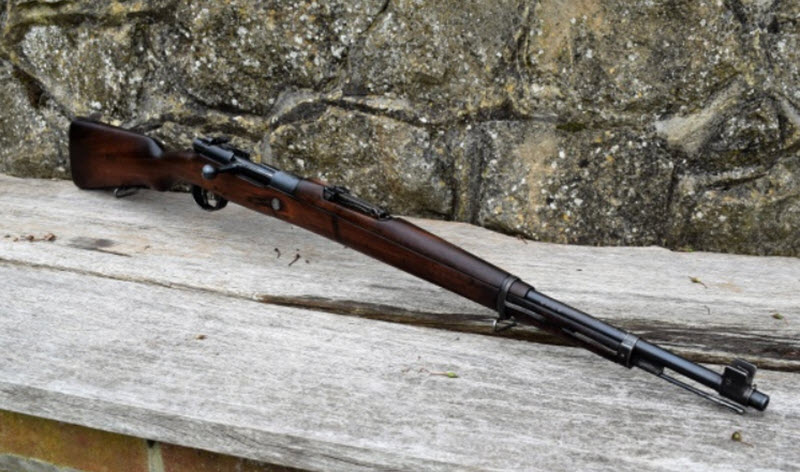The Mauser-Vergueiro is a bolt-action rifle designed in 1904 by José Alberto Verguerio, who at the time was an infantry officer in the Portuguese Army. He based his design on the Mauser 98 rifle, but introduced a new bolt system inspired by the one used by the Gewehr 1888 and Mannlicher-Schönauer. The Mauser-Vergueiro used a 6.5 x 58 mm cartridge developed especially for it.
The Mauser-Vergueiro was produced by the Deutsche Waffen and Munitionsfabriken (DWM).

Due to being designed in Portugal, the Mauser-Vergueiro became known as the Portuguese Mauser in many countries outside Portugal. In Portugal, the standard version was officially designated Espingarda 6,5 mm m/1904 while a lighter version was designated Carabina 6,5 mm m/1904.
Even though the Portuguese Army stopped issuing the Mauser-Vergueiro as their standard rifle in 1939, it was kept in limited use by the nation’s army until the mid-1960s, especially in certain Overseas units.
Some surviging Mauser-Vergueiro rifles are still in use in conflicts in Africa, such as the Northern Mal conflict.
Short facts
| Basic information | |
| Rifle type | Bolt action rifle |
| Place of origin | Portugal |
| Designed | 1904 |
| Designer | José Alberto Vergueiro |
| Produced | 1904-1945 |
| Variants | Rifle m/1904, Carbine m/1904 and Rifle m/1904-39 |
| Service history | |
| Used by | Portugal Brazil Union of South Africa German East Africa International Brigades |
| Wars | World War I Spanish Civil War Battle of Timor |
| Specifications | |
| Weight | 3.8 kg (Rifles m/1904 and m/1904-39) 3.6 kg (Carbine m/1904) |
| Length | 1,110 mm (Rifles m/1904 and m/1904-39) 1100 mm (Carbine m/1904) |
| Barrel length | 600 mm |
| Cartridge | 6.5×58mm Vergueiro (Rifle and Carbine m/1904) 7×57mm Mauser (Rifle m/1904, export model) 8×57mm IS (Rifle m/1904-39) |
| Muzzle velocity | 715 m/s |
| Feed system | 5-round stripper clip, internal box magazine |
| Sights | Iron sights (tangent leaf rear sight adjustable from 200 to 2,000 meters) |
Use
The Mauser-Vergueiro rifle was in service from 1904 to the start of the World War II. It saw combat in World War I and the Spanish Civil War, and it was actually used in World War II as well – but only in the Battle of Timor in Asia.
In World War I, the rifle was used in Portuguese and South African service, and the German colonial troops in East Africa used Mauser-Vergueiros that they had captured from the allied forces.
(For logistical reasons, Portugal’s Expeditionary Corps on the Western Front used British weapons instead of the standard Portuguese issues.)
The Portuguese Army
The Mauser-Vergueiro became the standard infantry rifle of the Portuguese Army in 1904, replacing the Kropatschek m/1886 which had been used in 1886. In 1939, the Mauser-Vergueiro was replaced by the Mauser 98k m/937. During that epoch, approximately 100,000 Mauser-Vergueiro rifles were produced for Portugal.
After 1939, many of the remaining Mauser-Vergueiros were modified to chamber the standard 7.92×57 mm cartridge intended for the Mauser 98k m/937. These modified rifles were called Espingarda 8 mm m/1904-39 and remained in limited use by the Portuguese Army until the 1960s, chiefly in Overseas units.
Brazil’s Federal Police
5,000 Mauser-Vergueiro rifles were produced in 1906 for the Federal Police of Brazil, using leftover components from a Portugues order. These rifles where used by police in the cities São Paulo and Rio de Janeiro.
South Africa
In 1915, South Africa purchased 25,000 Mauser-Vergueiros from Portugal, since the country didn’t have enough Lee-Enfield SMLE rifles for its troops.
